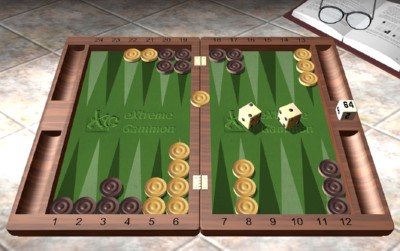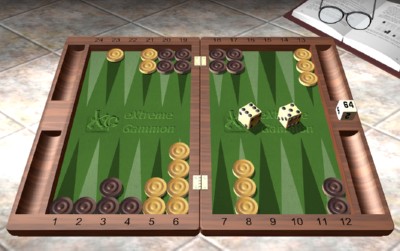Cash game. Center cube. White on move.

Position (A): White to play 2-1.

Position (B): White to play 6-5.
We’ve talked a little in previous posts about proto-backgames, those transitional positions that lie between ‘normal’ backgammon and true backgames. Here are our first couple of examples of proto-backgame positions, so let’s pause for a bit and discuss just what each side is trying to do.
Proto-backgames are defined by two key conditions. First, one or both players have several men back in their opponent’s inner board. In Positions (A) and (B), both sides have extra men back; Black has five men back and White has three. In addition, both sides will have blocking positions, but neither side will have a strong prime yet. ‘Strong’ in this context means a five or six-point prime; four points in a row are good, but not quite enough to really control your opponent’s back checkers.
In a proto-backgame, both sides have the same overarching goal: build a five-point prime and force your opponent to play a true backgame. The closer you get to your goal, the bigger your edge. In Position (A), White has a clear advantage (although nothing close to a doubling advantage) because he’s well ahead in the race, and the priming positions are about the same on both sides. In Position (B), the game is about even; White still leads in the race, but Black now has a better prime.
So we know the strategic goal is to build a prime. But what are we looking to do tactically, to get us closer to our goal? In general, we’re looking to do the following things from turn to turn:
(1) Kill no checkers. This is really the First Commandment of backgame and proto-backgame play. In this context, a ‘killed’ checker is any checker that moves deeper into your board than your opponent’s front anchor. In Position (A), for instance, White doesn’t want to move any checker to his 1-point or 2-point, since those points are behind Black’s anchor on the 3-point. Good players obey this rule religiously in complex position, while weak players are constantly distracted by the lure of making a deep inner-board point. In Position (A), White will eagerly make the bar-point and will fight hard for the 4-point, because those points are in front of Black’s anchor. But he will at all costs avoid moving down to the 1 and 2-points.
(2) Make new blocking points whenever you can. This is pretty obvious. You’ll never have a lot of rolls on any turn to make a new blocking point, so when you can it will probably take precedence over anything else.
(3) Circulate checkers into the outfield. The outfield is the real battleground in proto-backgames. When you move into your opponent’s outfield, you accomplish several good things. First, you jump over his blocking position, which reduces the chance that you’ll get stuck in his inner board with some later awkward shot. Second, you create builders for new priming points of your own, since checkers in his outfield bear on your outfield. Third, you put pressure on your opponent; by controlling the outfield first, you may prevent him from moving out.
With these goals in mind, Positions (A) and (B) become fairly easy.
In Position (A), White should play Bar/24 6/4*. The checkers on the 6-point have no function now other than to make the 4-point. The 4-point is clearly the most important point on the board right now, since making it will not only give White his best possible home board, but, by pushing Black back, will make it harder for Black’s checkers to get into the outfield.
The safe play Bar/23 22/21, on the other hand, allows Black to grab White’s 4-point without a fight, after which White’s two spare checkers on his 6-point have nothing to do for awhile. That’s bad. White only has 15 checkers, and he’ll need 10 of them to make a five-prime. Everybody has to keep working! Allowing Black to grab White’s 4-point effectively kills White’s checkers on his 6-point.
The right idea in (B) is 21/15 21/16! White doesn’t want to get stuck behind Black’s little prime, and the outfield is currently up for grabs, so White moves there first. Note that although Black has a lot of hits, the hits cost Black the midpoint. That’s a big concession, effectively isolating Black’s rear checkers from the rest of his army, so White really doesn’t fear being hit. Notice in addition that the alternatives are very weak. Playing 13/2* kills a checker and strips the midpoint, and 13/7 6/1* does the same thing in a different way. Running with one checker by 21/10 looks safer, but allows Black to hit with a six without making a positional concession.
Playing 21/15 21/16 is another example of what I called in the post of April 1 a ‘mobility’ play. White needs checkers to move so he doesn’t have to disturb the points that will eventually make up his prime. Releasing these two back checkers gives him that mobility. When you look at this position, don’t look at the two checkers on the 21-point and see some sort of key defensive anchor. Instead, you should see two checkers that are currently restrained from moving and are yearning to breathe the free air. Remember that Black has too many checkers in White’s board to succeed in doing much of anything offensively.





